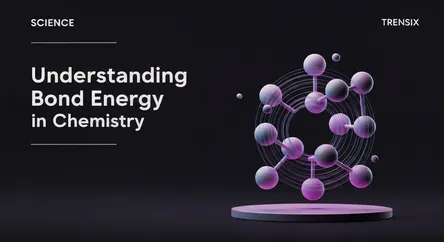Science
Understanding Bond Energy in Chemistry

An explanation of bond energy, a key chemical concept that measures the strength of bonds between atoms and determines molecular stability.
What is it?
Bond energy, also known as bond enthalpy, is the measure of a chemical bond's strength. It is defined as the average energy required to break one mole of a particular type of bond between atoms in the gaseous phase. Molecules with high bond energies are more stable and less reactive because their bonds are strong and difficult to break. Conversely, molecules with low bond energies are more reactive. This value is typically expressed in kilojoules per mole (kJ/mol). For example, a C-C single bond has a bond energy of about 347 kJ/mol, while a C=C double bond is stronger at 615 kJ/mol.
Why is it trending?
Bond energy is a foundational concept in chemistry that is crucial for predicting the outcomes of chemical reactions. By comparing the energy required to break bonds in reactants with the energy released when forming new bonds in products, chemists can determine whether a reaction will be exothermic (release heat) or endothermic (absorb heat). This is vital for designing new materials, synthesizing pharmaceuticals, and developing more efficient energy sources. Understanding bond strengths helps engineers create more stable materials and allows scientists to predict the stability and reactivity of new compounds.
How does it affect people?
The concept of bond energy has significant real-world applications. It is fundamental to understanding the energy content of fuels; the combustion of hydrocarbons in cars and homes releases energy because the bonds formed in the products (CO2 and H2O) are stronger than the bonds broken in the fuel and oxygen. In materials science, knowledge of bond energies guides the development of strong, durable materials for construction and technology. It also helps explain environmental phenomena, such as the formation of smog, where the high energy from a car's engine can break the strong triple bond in nitrogen gas, leading to the formation of pollutants.